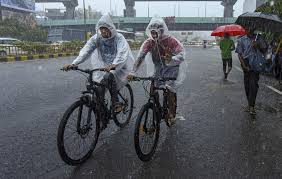North India is troubled by the scorching warmth. Folks dwelling right here at the moment are ready for the clouds to let the raindrops fall on the bottom as quickly as potential and scale back the temperature of the earth. Often, the monsoon knocks on the door of North India between 20 and 25 June and by 15 July, it takes the entire of India in its grip. Allow us to let you know at this time how the monsoon arrives.
)
First perceive the which means of the phrase monsoon
There’s a phrase in Arabic, mawsim, which suggests season. In Portuguese, it’s known as mansaiao. Whereas the early trendy Dutch phrase monsoon can also be just like this. The mixture of all these has turn into the phrase monsoon at this time. In easy phrases, you’ll be able to name monsoon the reversal of wind. Now to grasp it in clear phrases, it means the reversal of winds from one course by at the least 120 levels or utterly 180 levels.
How is monsoon fashioned?
Monsoon is fashioned when the solar is strictly above the equator within the Indian Ocean through the summer season season. Throughout this course of, the temperature of the ocean reaches 30 levels and the temperature of the earth reaches 45-46 levels. As quickly as this case is created, monsoon winds turn into lively within the southern a part of the Indian Ocean after which these winds cross one another and cross the equator and begin transferring in direction of Asia. Throughout this time, the method of formation of rain clouds over the ocean additionally accelerates. Later, these winds and rain clouds transfer in direction of the Bay of Bengal and the Arabian Sea whereas raining.

How does monsoon come to India?
When sturdy winds and rain clouds attain the Bay of Bengal and the Arabian Sea, they get divided into two components. One half strikes ahead from the Arabian Sea via Mumbai, Gujarat, Rajasthan, whereas the opposite half from the Bay of Bengal via West Bengal, Bihar, Northeast, collides with the Himalayas and turns in direction of the foothills of the Ganges. On this approach the monsoon covers India in two components




